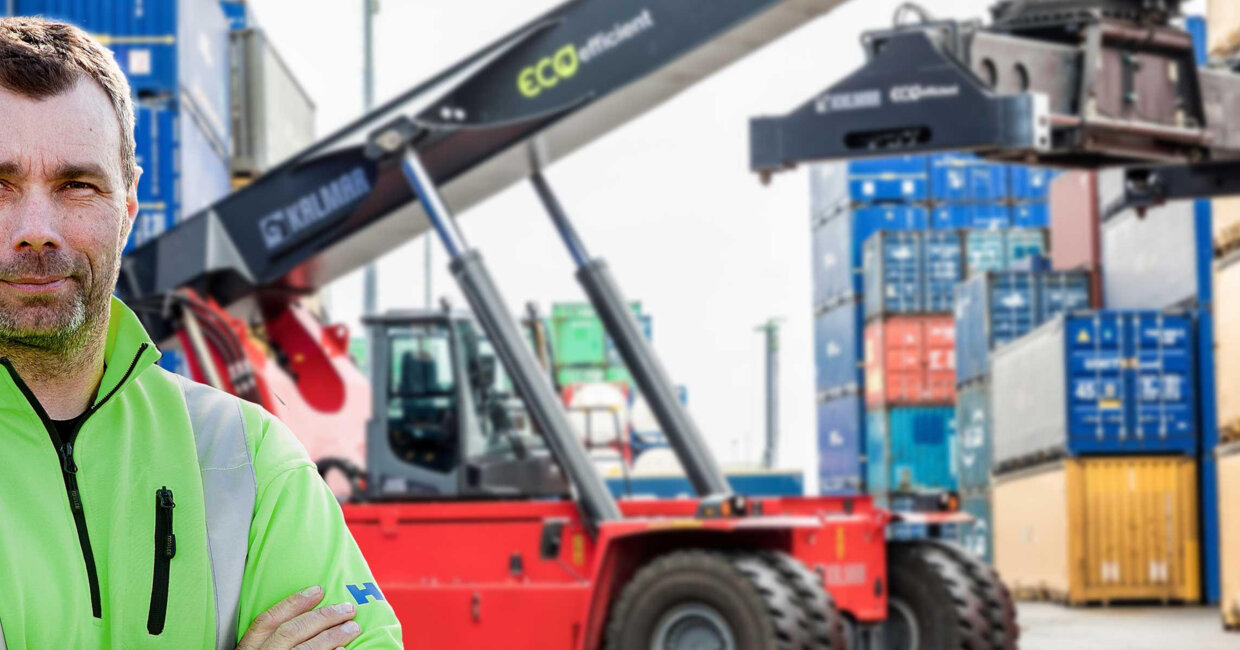
Why is eco driving training a good idea?
Operating vehicles in an eco-efficient way improves sustainability while saving money. This makes it an exciting option for cargo handlers who hope to strengthen their business and strive for a greener future.
For this reason, Kalmar provides Eco-driving training. It encompasses all aspects of operating the machines effectively.
“We see this as a low effort means to improve many aspects of cargo handling operations at once. Eco-efficient driving has proven effects on profitability and sustainability,” says Fredrik Fogelklou, responsible for global Parts & Lifecycle Solutions at Kalmar.
Operating vehicles with eco-efficiency increases sustainability and productivity
Eco-driving is a solution to many problems when it comes to operating vehicles and other equipment. The most immediate benefits here come from fuel savings.
“The training is designed to ensure our customers get the best from using Kalmar Equipment. Using less fuel has obvious positive effects on profitability. And in terms of sustainability, reducing the amount of carbon dioxide and nitrogen oxides will have a visible impact on our total emissions,” says Fogelklou.
Eco-driving training has a strong focus on the functionalities of the equipment. It gives the operators new insights into driving the vehicles with less effort – from putting less wear and tear on the tires to using the gas pedal optimally.
“One of the things we teach almost all drivers is that the operation speed does not really increase when using the equipment at full power. Keeping the engine at max 300 rounds per minute will save fuel without affecting work productivity,” explains Conny Eliasson, responsible for global training at Kalmar.
“We see an average of 15-20 % in fuel savings for people who learn these efficiency principles. Additionally, eco-driving puts less strain on the machines, increasing their expected lifetime.”
What results do we see from eco-driving?
Driving more with eco-efficiency has visible effects on how well the machines perform. Kalmar has measured how eco-driving training affects operations and improves results.
“We see an average of 15-20 % in fuel savings for people who learn these efficiency principles. Additionally, eco-driving puts less strain on the machines, increasing their expected lifetime,” says Eliasson.
Getting to know the machines will also improve workplace safety. Thorough knowledge of the equipment lets drivers get the most out of their work and anticipate risks better.
“At the start of the training, operators are typically familiar with only 50 % of the functionalities of our products. Having a face-to-face exchange with our experts allows them to gain full control of the vehicles. This allows for higher productivity and safety.”
Who can sign up for the eco-driving training?
Operators are the main target for the training. But managers are also welcome to take part.
“Our training has a practical approach. For example, we show how to drive up a ramp or a hill. Or how to brake and control engine speed. We offer eco-driving training at both the Kalmar factories and on our customer’s site of operations,” says Eliasson.
Also, a light version for eco-driving training is available for e-learning on the Kalmar website as well as a calculator to discover how much you can save with eco-efficient operations.
“We warmly welcome all users of our equipment to contact us for a quote on eco-driving. Let’s together see what we can do – how much money can be saved and how we can take responsibility for our planet’s scarce resources,” concludes Eliasson.
Related articles
Further reading
Subscribe and receive updates in your email
Prenumerera på våra publikationer

